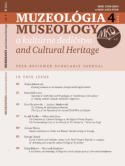The Protection of Cultural Heritage vs. the Right to Private Property: The Extraordinary Case of the Portrait of Dr. Gachet by Vincent van Gogh
The Protection of Cultural Heritage vs. the Right to Private Property: The Extraordinary Case of the Portrait of Dr. Gachet by Vincent van Gogh
Author(s): Kamil Zeidler, Aleksandra GussSubject(s): Museology & Heritage Studies, Visual Arts, Philosophy of Law, History of Art
Published by: Univerzita Komenského v Bratislave, Filozofická fakulta
Keywords: Cultural Heritage Law; Art Law; Hard Cases; Liberalism vs. Communitarianism; Philosophy of Law;
Summary/Abstract: In 1890, Vincent van Gogh moved from Paris to Auvers-sur-Oise, where he met Dr. Paul-Ferdinand Gachet, who agreed to host and take care of the painter, especially regarding his mental health. However, he did not manage to save the artist, who committed suicide the same year. His hopeless mental health was seen in the famous portrait of Dr. Gachet, which radiated a distinct melancholy and sadness. The Portrait of Dr. Gachet was bought for $ 82.5 million by a Japanese millionaire and art collector, Ryoei Saito, who said that after his death it was to be burned along with his corpse. It raised loud objections in the art world, which recognised the common good and the legacy of our cultural heritage in the painting. This case is a classic example of a dispute between the ideals of liberalism and communitarianism and is seen as a hard case in law. The aim of the article is to present the history of The Portrait of Dr. Gachet and its place in the dispute between liberalism and communitarianism (in the context of cultural heritage law), which in turn means that this case can be seen as a hard case.
Journal: Muzeológia a kultúrne dedičstvo
- Issue Year: 9/2021
- Issue No: 4
- Page Range: 57-68
- Page Count: 12
- Language: English

